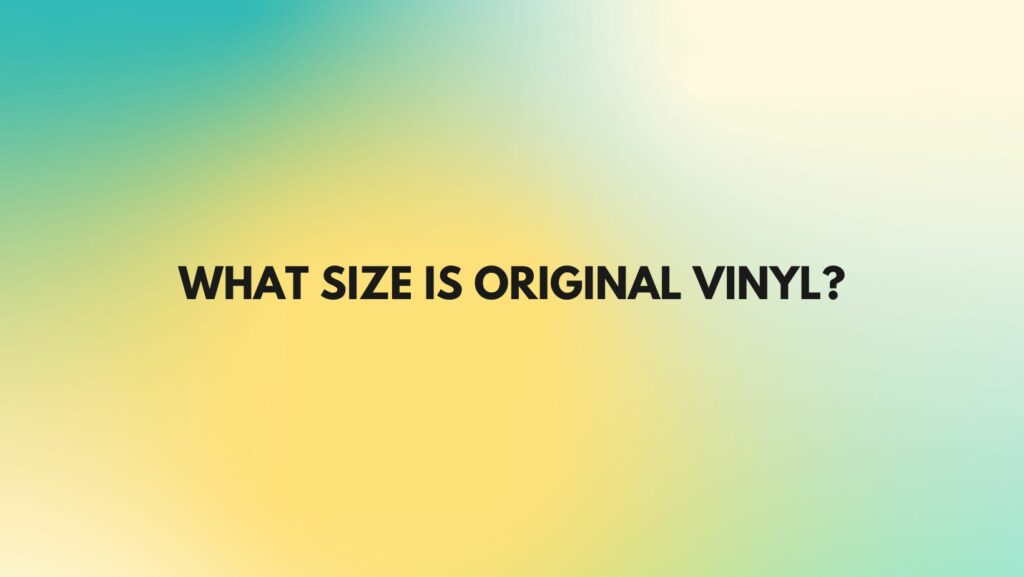Vinyl records, with their iconic grooves and warm, analog sound, have captivated music lovers for decades. Over the course of their history, vinyl records have come in a variety of sizes, each offering a unique listening experience and reflecting the technological advancements of their time.
The Earliest Vinyl Records: 7-Inch Shellac Discs
The earliest vinyl records, known as shellac discs, were typically 7 inches in diameter. These records, introduced in the late 1880s, spun at 78 revolutions per minute (RPM) and could hold up to four minutes of music per side.
Shellac discs were relatively fragile and susceptible to wear, but they were the dominant format for recorded music until the late 1940s. Their small size and short playing time made them suitable for singles or short musical pieces.
The Rise of 12-Inch Vinyl Records: A New Era of Sound
In the late 1900s, the introduction of polyvinyl chloride (PVC), or vinyl, as the primary material for records led to a significant shift in record size. Vinyl records were more durable and less prone to warping than shellac discs, allowing for longer playing times and more intricate groove patterns.
12-inch vinyl records, also known as LPs (long-playing records), quickly became the standard format for albums. Their larger size allowed them to accommodate up to 22 minutes of music per side, enabling artists to create expansive musical journeys and showcase their creativity without limitations.
The Emergence of 7-Inch Vinyl Singles
Alongside the rise of 12-inch LPs, 7-inch vinyl records, also known as “singles,” emerged as a popular format for releasing individual songs. These records typically spun at 45 RPM, offering a shorter playing time but a more energetic and punchy sound.
7-inch singles were particularly popular in the era of rock and roll, their faster rotation and shorter duration complementing the upbeat, energetic style of the music. They continue to be used today for releasing singles, demo recordings, and special editions of popular songs.
The Decline and Revival of 10-Inch Vinyl Records
10-inch vinyl records, spinning at 78 RPM, were once a common format in the early days of vinyl. However, their popularity waned in the 1950s as 12-inch LPs and 7-inch singles became the dominant formats.
Despite their reduced presence, 10-inch records remain a valuable part of vinyl history and are often sought after by collectors and enthusiasts of vintage music. Their unique size and sound offer a nostalgic listening experience that bridges the gap between the early days of vinyl and the modern era.
Conclusion: A Legacy of Vinyl Innovation
The evolution of vinyl record sizes reflects the ever-changing landscape of music technology and the enduring appeal of vinyl as a medium for recorded sound. From the early 7-inch shellac discs to the modern 12-inch LPs and 7-inch singles, each size has played a significant role in shaping the history of recorded music. As vinyl continues to thrive in the digital age, its diverse range of sizes serves as a testament to its adaptability and its enduring appeal to music lovers worldwide.


